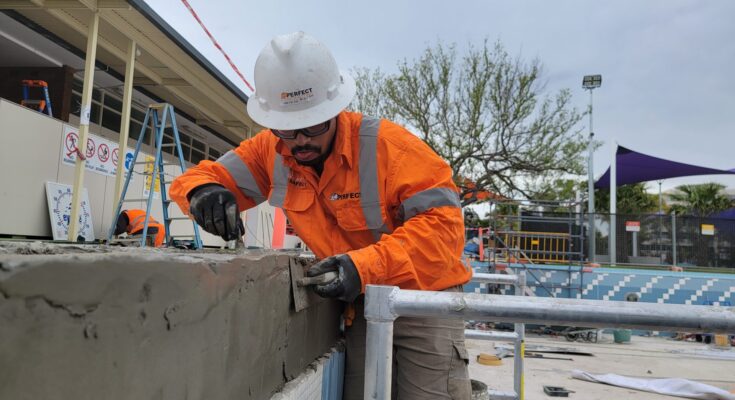When it comes to maintaining a home, few things can cause as much concern and urgency as the need for structural repairs. The integrity of your home’s structure is paramount, not only for the safety of its occupants but also for the longevity and value of the property itself. In this comprehensive guide, we will delve into the critical world of structural repairs in residential buildings, offering homeowners valuable insights, practical advice, and peace of mind.
Understanding Structural Repairs
The process of repairing or replacing a building’s foundation, walls, beams, and columns is referred to as structural repairs. These components are essential to preserving the stability and security of the structure. Age, environmental conditions, poor construction, physical damage, and other causes can all necessitate such repairs.
Recognizing the Signs
Early detection of potential structural issues can significantly reduce the complexity and cost of repairs. Some common indicators that your home may need structural attention include:
- Cracks in walls or foundations, especially if they are wide, increasing in size, or accompanied by other signs of movement.
- Doors or windows that stick or won’t close properly, which may indicate shifting or warping of the structure.
- Sagging or uneven floors can be a sign of compromised support beams or foundation settlement.
- Gaps between walls and floors or ceilings signal potential movement or separation within the structure.
The Importance of Professional Evaluation
Given the complexities and potential risks associated with structural problems, enlisting the expertise of a structural engineer is a crucial first step once any signs of structural issues are observed. These experts can evaluate the problem’s severity, pinpoint its underlying causes, and suggest suitable remediation techniques. Skipping this vital evaluation can lead to ineffective repairs, further damage, or even catastrophic failure of the structure.
Organizing the Repair of Structures
Upon professional confirmation of the need for structural repairs, the planning process for these repairs entails many crucial steps:
- Choosing the Right Contractor: Selecting a contractor with specific experience in structural repairs is essential. Look for licensed, insured, and reputable professionals with a track record of completed projects similar to yours.
- Understanding the Scope and Costs: Be prepared for a detailed discussion with your contractor about the extent of the repairs needed. This should contain a detailed description of the tasks that need to be completed, the supplies needed, the anticipated time frame for the project, and the overall cost.
- Navigating Permits and Regulations: Most structural repair projects will require permits from local building authorities. Your contractor should be familiar with these requirements and handle the permit application process on your behalf.
- Preparing for Disruption: Depending on the scale of the repairs, you may need to make temporary living arrangements. Even minor repairs can involve significant noise, dust, and disruption to your daily routine.
Repair Techniques and Considerations
The specific techniques used for Structural Repairs can vary widely depending on the nature and extent of the damage. Some common methods include underpinning to strengthen an inadequate foundation, the installation of steel beams to reinforce damaged or weakened structural elements, and the use of epoxy injections to repair cracks in concrete.
Throughout the repair process, it’s essential to maintain open communication with your contractor, ensuring that any changes to the plan or unexpected findings are discussed and addressed promptly. This collaboration will help ensure that the repairs are completed successfully and that the final result restores the structural integrity of your home.
Preventing Future Structural Issues
While some structural problems are unavoidable, regular maintenance and prompt attention to minor issues can help prevent the need for more significant repairs in the future. This includes:
- Regular inspections to detect early signs of damage or wear.
- Ensuring adequate drainage around the foundation to stop flooding.
- Avoiding modifications to load-bearing walls without professional guidance.
Long-term Strategies for Structural Health
A proactive approach to structural health involves more than just addressing immediate repair needs. It encompasses a comprehensive strategy aimed at preventing future issues and extending the lifespan of the building. This can include regular structural health assessments, investing in improvements that enhance structural resilience, and adopting construction practices that mitigate potential damage from environmental and human factors.
The Impact of Technology on Repair Methodologies
Advancements in technology have significantly transformed the field of structural repair. Techniques such as 3D scanning and drone inspections allow for more accurate assessments of structural integrity, identifying issues that may not be visible to the naked eye. Similarly, the development of new materials and repair techniques, such as carbon fiber reinforcement and smart sensors for monitoring structural health, offers enhanced effectiveness and durability of repairs. Adopting these technologies can result in less intrusive, more economical, and more effective solutions for structural problems.
Sustainability in Repair Materials
As environmental awareness grows, the importance of sustainability in construction and repair materials has come to the forefront. Homeowners and repair professionals alike are increasingly seeking out eco-friendly options that not only address structural needs but also minimize environmental impact. This includes the use of recycled materials, products with lower carbon footprints, and techniques that reduce waste and energy consumption during the repair process. Opting for sustainable repair solutions contributes to the overall health of the environment while ensuring the longevity and safety of the home.
Also Read: Maintaining Clean and Sterile Environments
Final Thoughts
Structural repairs in residential buildings represent a critical intersection of safety, investment, and stewardship. A proactive, knowledgeable, and sustainable approach to structural difficulties can help homeowners protect their property against future issues, increase the value of their property, and promote a healthier environment. The journey through understanding, addressing, and preventing structural damage is not just about maintaining a building; it’s about creating a secure and lasting legacy for future generations.
Remember, the home is more than a structure; it’s a sanctuary for those who dwell within. Protecting its structural integrity is not merely a practical necessity but a profound act of care for your family and your future. As we navigate the complexities of homeownership, let us embrace the challenges of structural repairs with knowledge, foresight, and a commitment to excellence, ensuring our homes stand strong and resilient through the years.




